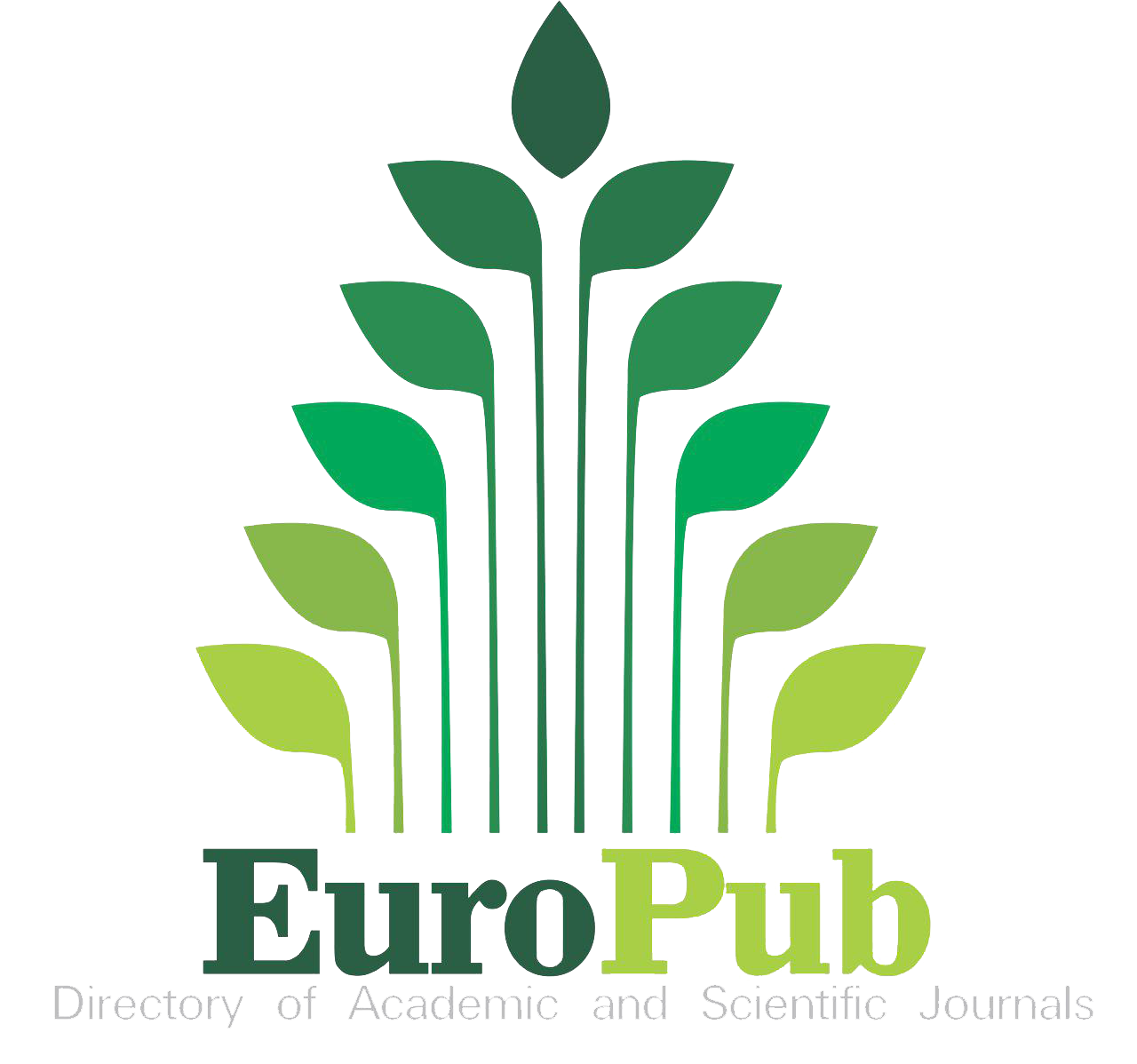Pemanfaatan Trichokompos dan Biochar Limbah Panen Padi untuk Meningkatkan Pertumbuhan Tanaman Jagung dan Sifat Kimia Tanah Ultisol
Abstract
Penelitian ini bertujuan untuk mengetahui pengaruh pemberian trichokompos dan biochar dan mendapatkan dosis trichokompos dan biochar yang terbaik bagi pertumbuhan dan hasil tanaman jagung pada tanah Ultisol. Penelitian dirancang dengan metode eksperimen lapangan pola Rancangan Percobaan Petak Terpisah (Split Plot) yang terdiri dari 2 faktor perlakuan, yaitu faktor pemberian biochar sebagai petak utama terdiri dari 3 taraf perlakuan, yaitu B0 = tanpa biochar, B1 = 10 ton/ha dan B2 = 15 ton/ha. Faktor pemberian trichokompos jerami padi sebagai anak petak terdiri dari 4 taraf yaitu K0 = tanpa trichokompos, K1 = 10 ton/ha, K2 = 15 ton/ha, K3 = 20 ton/ha. Parameter pertumbuhan yang diamati meliputi tinggi tanaman, berat kering dan volume akar pada fase vegetatif maksimum. Sifat kimia tanah yang diamati meliputi C organik, N, P dan K tanah pada akhir penelitian. Data hasil pengamatan dianalisis uji F pada taraf 5% kemudian dilakukan Uji lanjut menggunakan uji Beda Nyata Jujur (BNJ). Hasil penelitian menunjukkan adanya pengaruh nyata dari faktor tunggal pemberian biochar sekam padi dan trichokompos jerami padi dan terjadi interaksi perlakuan terhadap pertumbuhan jagung dan sifat kimia tanah Ultisol. Dosis biochar yang dapat meningkatkan pertumbuhan pada tanaman jagung di tanah Ultisol adalah 10-15 ton/ha. Dosis terbaik pemberian trichokompos terhadap pertumbuhan tanaman jagung di tanah Ultisol adalah 15-20 ton/ha. Terdapat interaksi pemberian biochar sekam padi dan trichokompos pada tanaman jagung di tanah Ultisol. Dosis terbaik yang direkomendasikan pada pemberian kombinasi perlakuan biochar dan trichokompos yaitu B1K3 (biochar 10 ton/ha dan trichokompos 20 ton/ha).
Kata Kunci:
Tanaman Jagung; Biochar; Trichokompos; Tanah Ultisol
Utilization of Trichocompost and Biochar from Rice Waste to Increase Corn Growth and Chemical Properties of Ultisol Soil
ABSTRACT
This study aims to determine the effect of giving trichocompost and biochar and to obtain the best dose of trichocompost and biochar for the growth and yield of corn on Ultisol soil. The study was designed using the field experiment method with a Split Plot Experimental Design pattern which consisted of 2 treatment factors, namely the factor of giving biochar as the main plot consisting of 3 treatment levels, namely B0 = no biochar, B1 = 10 tons/ha and B2 = 15 tons/ha. Factors giving rice straw trichocompost as subplots consisted of 4 levels, namely K0 = no trichocompost, K1 = 10 tons/ha, K2 = 15 tons/ha, K3 = 20 tons/ha. Growth parameters observed included plant height, dry weight, and root volume in the maximum vegetative phase. The chemical properties of the soil observed included organic C, N, P, and K soil at the end of the study. Observational data were analyzed by F test at 5% level then further test was carried out using the Honest Significant Difference (HSD) test. The results showed that there was a significant effect of the single factor giving rice husk biochar and rice straw trichocompost and there was an interaction treatment on corn growth and the chemical properties of Ultisol soil. The dose of biochar that can increase the growth of corn on Ultisol soil was 10-15 tons/ha. The best dose of trichocompost on the growth of corn on Ultisol soil was 15-20 tons/ha. There was an interaction between giving rice husk biochar and trichocompost to corn plants on Ultisol soil. The best recommended dose for the combination of biochar and trichocompost treatment was B1K3 (10 tons/ha biochar and 20 tons/ha trichocompost).
Keywords
Full Text:
PDFReferences
Apzani, W., I Made S., & Muhammad T. F. (2015). Aplikasi Biokompos Stimulator Trichoderma sp. dan Biochar Tempurung Kelapa untuk Pertumbuhan dan Hasil Jagung (Zea mays L.) di Lahan Kering. Jurnal Agroteknologi, 9(1), 21-35.
Badan Pusat Statistik Kalimantan Barat. (2017). Kalimantan Barat dalam Angka (Kalimantan Barat Province in Figures) 2017. Pontianak: Badan Pusat Statistik Provinsi Kalimantan Barat.
Badan Pusat Statistik Kalimantan Barat. (2020). Kalimantan Barat Dalam Angka (Kalimantan Barat Province in Figures) 2020. Pontiana : Badan Pusat Statistik Provinsi Kalimantan Barat.
Bagus, A. M., Armaini., & Silvina, F. (2016). Pengaruh Kombinasi Trichokompos dengan Pupuk Urea terhadap Produksi Tanaman Sawi (Brassica juncea L.). JOM Faperta, 3(2), 1–11.
Bambang, S. A. (2012). Si Hitam Biochar yang Multiguna. Surabaya: PT. Perkebunan Nusantara X (Persero).
Gardner, F. P., Pearce, R. B., & Mitchell, R. L. (1991). Physiology of Crop Plants (Fisiologi Tanaman Budidaya, alih bahasa Herawati Susilo). Jakarta: UI Press.
Hale, S. E., Alling, V., Martinsen, V., Mulder, J., Breedveld, G. D., & Cornelissen, G. (2013). The sorption and desorption of phosphate-P, ammonium-N and nitrate-N in cacao shell and corn cob biochars. Chemosphere, 91, 1612–1619.
Herhandini, D. A., Suntari, R., & Citraresmini, A. (2021). Pengaruh Aplikasi Biochar Sekam Padi dan Kompos terhadap Sifat Kimia Tanah, Pertumbuhan, dan Serapan Fosfor Tanaman Jagung Pada Ultisol. Jurnal Tanah dan Sumberdaya Lahan. 8(2), 385–394.
Igalavithana, A. D., Ok, Y. S., Usman, A. R. A., Al-Wabel, M. I., Oleszczuk, P., & Lee, S. S. (2016). The Effects of Biochar Amendment on Soil Fertility. Agricultural and Environmental Application of Biochar: Advances and Barriers. SSSA Special Publication.
Kurnilawati, S. & Syakur. (2013). Phosfat Tersedia, Serapannya serta Pertumbuhan Jagung (Zea Mays L.) Akibat Amelioran dan Mikoriza pada Andisol. Jurnal Manajemen Sumberdaya Lahan, 3(2), 231-239.
Latuponu, H., Dj. Shiddieq, A., Syukur, E., & Hanudin. (2011). Pengaruh Biochar dari Limbah Sagu terhadap Penelitian Nitrogen di Lahan Kering Masam. Jurnal Agronomika, 11(2), 144-155.
Mateus, R., Lenny, M., & Kantur, D. (2017). Pemanfaatan Biochar Limbah Pertanian sebagai Pembenah Tanah untuk Perbaikan Kualitas Tanah dan Hasil Jagung di Lahan Kering. Agrotrop, 7(2), 99–108.
Meena, V. S., Maurya, B. R., & Bahrudur, I. (2014). Potassium Solubiliziation by Bacterial Strain in Waste Mica. Bangladesh J.Bot., 43(2), 235-253.
Nelvila, Olva & Silvina, Fetmi. (2018). Pengaruh Pemberian Arang Sekam Padi dan Trichokompos Jerami Padi terhadap Pertumbuhan dan Produksi Jagung Manis (Zea mays saccharata Sturt) di Lahan Gambut. JOM Faperta, 5(1), 1-15.
Pane, M. A., Damanik, M. M. B., & Sitorus, B. (2014). Pemberian bahan organik kompos jerami padi dan abu sekam padi dalam memperbaiki sifat kimian tanah Ultisol serta pertumbuhan tanaman jagung. Jurnal Online Agroekoteknologi, 2(4), 1426-1432.
Parmar, P. & Sindhu, S. S. (2013). Potassium solubilization by rhizoshere bakteria: Influence of nutritional and environmental conditions. Microbiology Reasearch, 3(1), 25-31.
Pratama, R. E., Mardhiansyah, M., & Oktorini, Y. (2015). Waktu Potensial Aplikasi Mikoriza dan Trichoderma Spp. untuk Meningkatkan Pertumbuhan Semai Acacia mangium. JOM Faperta, 2(1), 1–11.
Purnama, M. (2014). Uji Dosis Biokompos dan Biochar terhadap Keragaan Pertumbuhan dan Hasil Kedelai pada Tanah Entisol. Tesis. Program Studi Magister Pengelolaan Sumberdaya Lahan Kering, Program Pascasarjana Universitas Mataram.
Pusat Data dan Sistem Informasi Pertanian. (2018). Outlook Jagung Komoditas Pertanian Subsektor Tanaman Pangan. Jakarta: Pusat Data dan Sistem Informasi Kementerian Pertanian.
Putri, V. I., Mukhlis., & Hidayat, B. (2017). Pemberian Beberapa Jenis Biochar untuk Memperbaiki Sifat Kimia Tanah Ultisol dan Pertumbuhan Tanaman Jagung. Agroekoteknologi, 5(4), 824–828.
Subowo, Y. B. (2013). Kemampuan Beberapa Jamur Tanah dalam Menguraikan Pestisida Deltametrin dan Senyawa Lignoselulosa. http://e-journal.biologi.lipi.go.id/index.php/ berita_biologi/article/ [Diakses Tanggal 9 Oktober 2021].
Sudantha, I. M. & Suwardji. (2013). Pemanfaatan Biokompos, Bioaktivator dan Biochar untuk Meningkatkan Hasil Jagung dan Berangkasan Segar pada Lahan Kering Pasiran dengan Sistem Irigasi Sprinkler Big Gun. Usul Penelitian Unggulan Strategis Tema: Ketahanan dan Keamanan Pangan (Food Safety & Security). Laporan Penelitian Strategis Nasional. Universitas Mataram.
Sukartono, W. H., Utomo, Z., Kusuma., & Nugroho, W. H. (2011). Soil Fertility Status and Maize (Zea mays) Yield After Biochar Application on Sandy Soils of North Lombok, Indonesia. Journal of Tropycal Agriculture, 49, 47-53.
Supartha, I. N. Y., Wijaya, G., & Adnyana, G. M. (2012). Aplikasi Jenis Pupuk Organik pada Sistem Pertanian Organik. Jurnal Agroekoteknologi Tropika, 1(2), 98-106.
Verdiana, M. A., Sebayang, H. T., & Sumarni, T. (2016). Pengaruh Berbagai Dosis Biochar Sekam Padi dan Pupuk NPK terhadap Pertumbuhan dan Hasil Tanaman Jagung (Zea mays L.). Jurnal Produksi Tanaman, 4(8), 611–616.
Warnock, D. D., Lehmann, J., Kuyper, T. W., & Rillig, M. C. (2007). Mycorrhizal responses to biochar in soil-concepts and mechanisms. J. Plant and Soil, 30(1), 9-20.
Widowati., Asnah., & Sutoyo. (2012). Pengaruh Penggunaan Biochar dan Pupuk Kalium terhadap Pencucian dan Serapan Kalium pada Tanaman Jagung. Buana Sains, 12(1), 83-90.
Widyantika, S. D. & Prijono, S. (2019). Pengaruh biochar sekam padi dosis tinggi terhadap sifat fisik tanah dan pertumbuhan tanaman jagung pada Typic Kanhapludult. Jurnal Tanah dan Sumberdaya Lahan, 6(1), 1157-1163.
DOI: http://dx.doi.org/10.26737/var.v5i1.2799
Refbacks
- There are currently no refbacks.

This work is licensed under a Creative Commons Attribution-NonCommercial 4.0 International License.
Publisher:
Institute of Managing and Publishing of Scientific Journals, STKIP Singkawang
Address : STKIP Singkawang, Jalan STKIP - Kelurahan Naram, Singkawang, Kalimantan Barat, INDONESIA, 79251
No. Telp. : +62562 420 0344
No. Fax. : +62562 420 0584
VARIABEL
e-ISSN : 2599-3038
p-ISSN : 2599-302X

Editor in Chief Contact: [email protected] / [email protected] /Wa : +6285310307312
Publisher Contact: [email protected] / [email protected] / Wa: +6282142072788
Management Tools
VARIABEL IS INDEXED BY
Variabel is licensed under a Creative Commons Attribution-NonCommercial 4.0 International License.
























